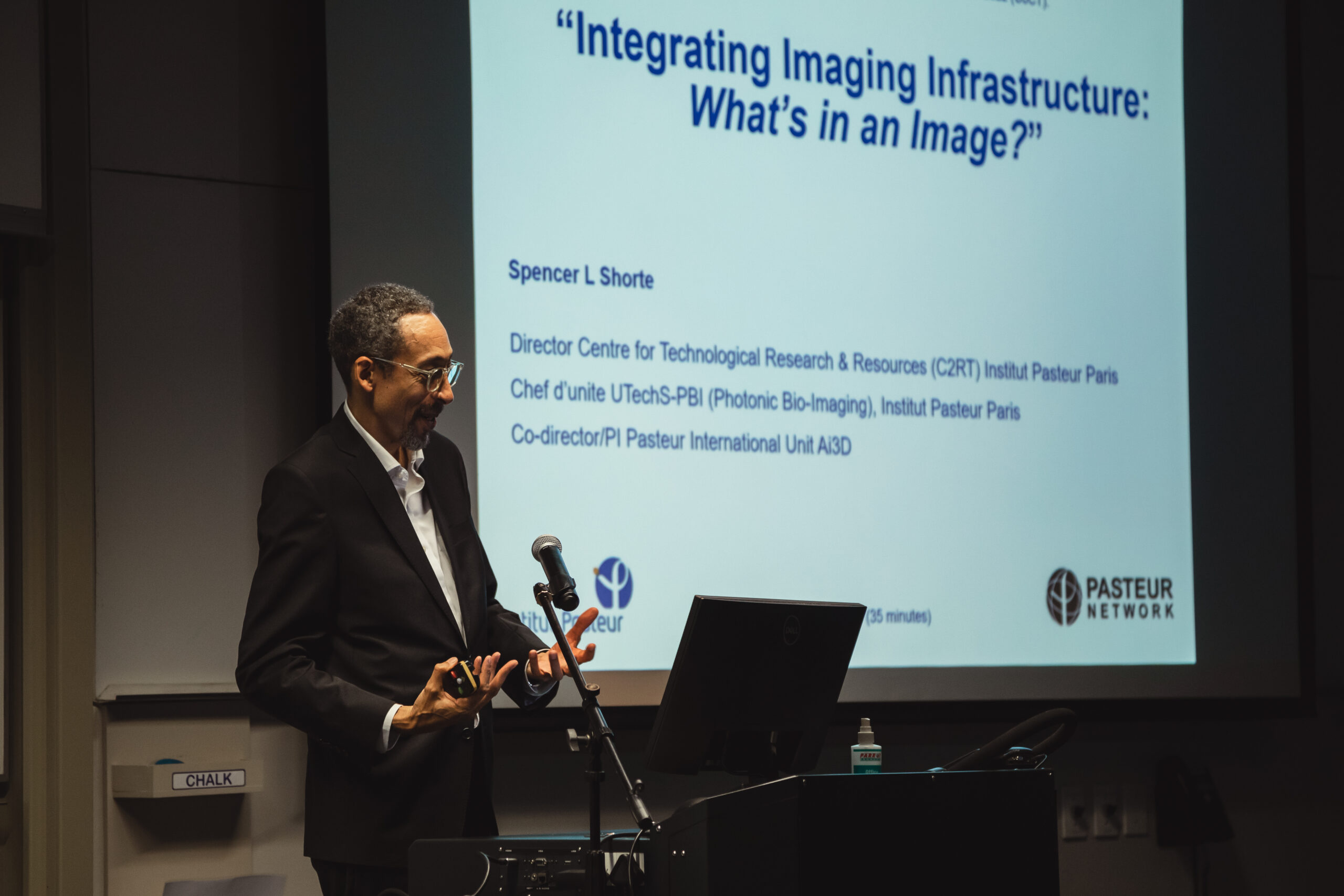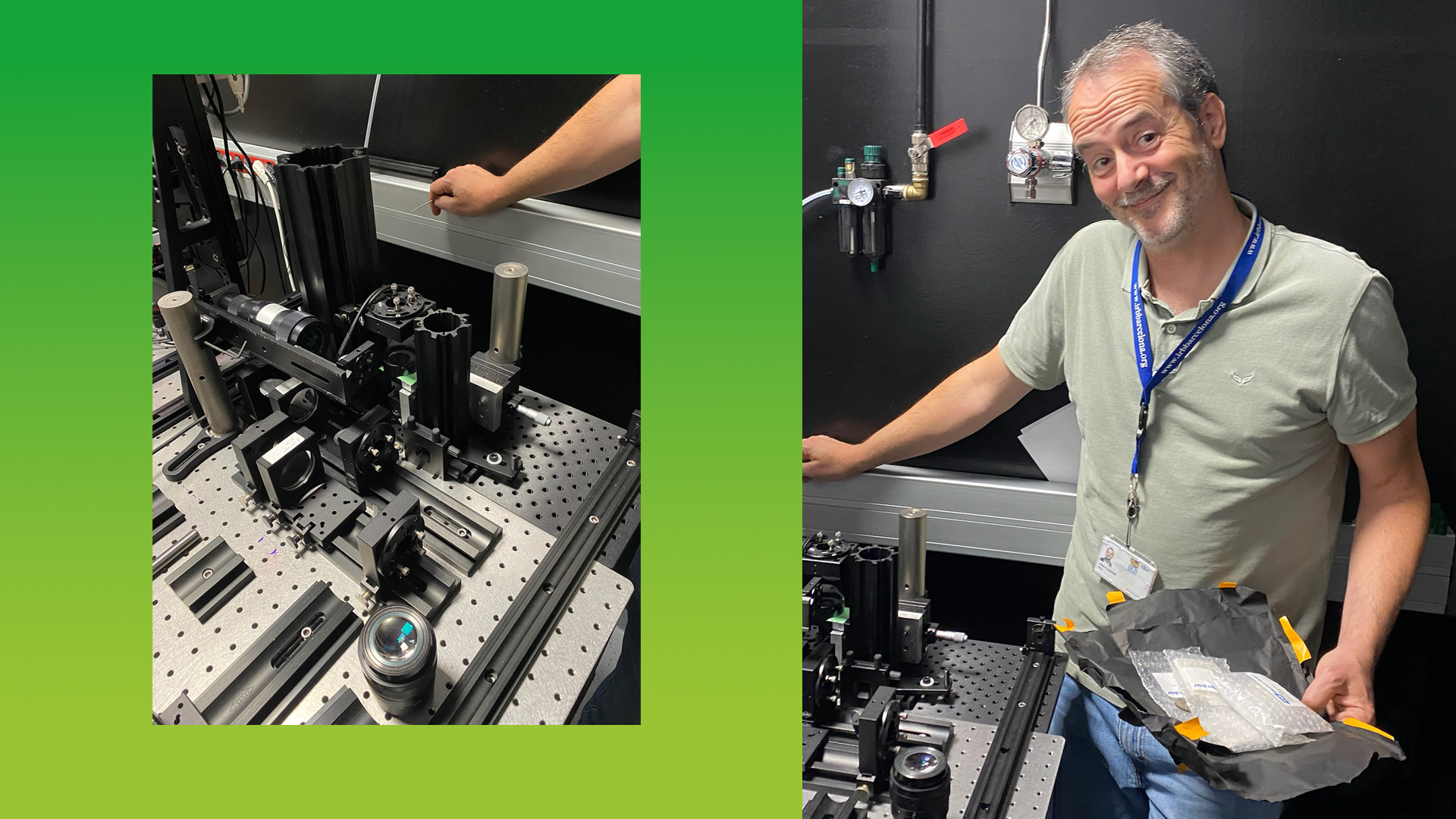
New correlative imaging methods to unlock the secrets of malaria oocyst reproduction in the mosquito midgut
With steady hands like a surgeon’s and sharp eyes like an eagle’s, Nedal Darif, PhD scientist at EMBL’s volume correlative microscopy team, has dedicated his talents to dissecting replication mechanisms of the malaria parasite in mosquitoes. His work in advanced Electron Microscopy and correlative imaging applied to infectious diseases research has brought Nedal to connect with Nathan Ribot, another passionate infection biology PhD scientist specialising in malaria infection and immunity at Institut Pasteur. With support through ISIDORe funding and Euro-BioImaging, Nathan and Nedal have joined forces to study a rare, never before described phenomena in malaria parasite replication (oocyst development) in the mosquito’s midgut. This formidable collaboration just might head towards discovering hidden reproduction pathways of this deadly pathogen of acute concern, and help scientists explore future approaches for combating malaria.
The journey started when Nathan was imaging malaria oocyst development within live mosquitoes. Using a fluorescence widefield microscope, he was able to detect a rare form of Malaria parasite replication in the mosquito midgut. Nathan’s attention was drawn to this phenomena, which has not yet been described. Such an exceptional occurrence in cell biology - could this be a key to understanding a hidden survival strategy of the parasite? “We know mosquitoes are the vector of malaria,” says Nathan, “but we still do not fully understand all the details of the parasite replication and its development at the oocyst stage. If our observations and hypothesis can be confirmed by ultrastructural analysis and if the occurrence of such events is reproducible, we would have identified a very rare form of cell and parasite replication biology.”
Insights into the spread of malaria
“Understanding how oocysts do and can replicate is very important in order to control the spread of malaria. If we could effectively block the reproduction of the oocysts inside mosquitoes, this could also prevent transmission of this deadly parasite to humans. In a long term perspective, this knowledge could help develop further treatments and vaccines against different parasite types/strains,” continues Nathan.
In parallel, Nedal had been working on a sophisticated correlative pipeline combining Synchrotron-X ray computed tomography, or High Throughput Tomography (HiTT) with Serial Block-face Scanning Electron Microscopy (SBF-SEM) to map oocysts inside the mosquito midgut and target them for 3D reconstruction. This methodology, which is currently being tested for open access collaboratively between EMBL's Electron Microscopy Core Facility (led by Yannick Schwab), part of Euro-BioImaging's EMBL Node, and the Biological X-Ray Imaging team led by Liz Duke, and will be published soon (Darif et al in prep.), was of great interest to Nathan.
“Nedal was the only person I knew in the Malaria research community who could help me further explore the mysterious phenomena I observed. We knew each other through our individual collaborations with Prof. Friedrich Frischknecht’s group in Heidelberg,” Nathan continues. “And it was Nedal who fortunately pointed me to Euro-BioImaging and the funding opportunities through the ISIDORe project (https://isidore-project.eu/) - an entirely new discovery for me. The ISDORe TNA Calls really triggered this project through free access to the required cutting-edge volume imaging modalities and expertise offered at EMBL,” Nathan adds with high inspiration.
Left: Nedal Darif examines one of the resin blocks that contain miniscule slice of the mosquito midgut in preparation for Electron Microscopy. Centre left: Nathan Ribot (left) and Nedal Djamil-Darif (right) at their Electron Microscopy work station in the EMBL Imaging Centre. Centre right: Ultramicrotome with a Resin block for Electron Microscopy. Right: Close-up view of the mosquito midgut embedded in resin, ready for Electron Microscopy. Photos by Arina Rybina.
While the X-Ray imaging part will allow to map specific events of parasite oocyst replication the mosquito midguts, the detailed ultrastructural analysis of these events will be performed using SBF-SEM at EMBL EMCF. Combining these two consecutive volume imaging modalities across scales, Nathan and Nedal aim to perform a 3D reconstruction model of the rarely observed oocyst behaviour, and unravel more details of the parasite replication biology - which seems to be more dynamic and complex than initially thought.
State-of-the-art imaging pipeline
“Liz Duke’s team at EMBL Hamburg made the whole project pipeline possible,” adds Nedal. “Using the recently introduced high-throughput X-Ray imaging to nondestructively scan deep through mosquito midguts and identify regions of interest before moving to high resolution EM, is a true time saver. We are able to scan 80 sample blocks in 15-16 hours - that’s really fast. In comparison, it would take us several years to entirely screen 1 sample with an Electron Microscope (although in much higher resolution). But, of course, there are a number of challenges to overcome, and the project with Nathan is just beginning.”
Rachel Melwig, EMBL EMCF Operational manager adds: “Nedal is doing fantastic work and brings in the right skills for advancing and pushing methodological developments not only for his own research, but also for the benefit of the scientific community and our users. The support to Nathan’s ISIDORe project is a great example of how research innovation can be effectively integrated towards open access to communities, and it also reflects the close collaboration between scientists and facility staff in Yannick Schwab's team.”
Nedal concludes, “Application of the described multimodal volume imaging is another pilot use case for us. In a perspective view, the correlative multi-scale imaging approach could be deployed in similar ways to also study other parasites and stages. We might be able to learn more about parasite’s infection and replication biology, detect more events of how individual parasites invade cells, and observe unexpected occurrences. We could find more needles in the haystack, which can help us understand how to minimise the threats and suffering caused by those pathogens.”
In the meantime, Nathan and Nedal are looking forward to acquiring and studying many data in support of their vision of unravelling secret phenomena in oocysts replication.
About ISIDORe Access Fund:
ISIDORe (Integrated Services of Infectious Diseases Outbreak Research) is a large-scale Horizon Europe funded initiative bringing together major European Life Science Research Infrastructures and Infectious Diseases Networks providing high-quality services, to support and advance research on epidemic-prone pathogens and to increase Europe’s preparedness for arising infectious diseases threats. Through the so-called TNA (Transnational Access) Calls, the project offers a unique opportunity for scientists working in the respective domains to access an integrated, wide portfolio of cutting-edge scientific services and expertise free of charge. The European Molecular Biology Laboratory (EMBL) is a partner in ISIDORe and offers a portfolio of cutting-edge imaging services through Euro-BioImaging in the project, along with 18 other Euro-BioImaging Nodes. For more information, click here.
For more information on High Throughput X-ray Imaging:
Albers et al., 2024: High Throughput Tomography (HiTT) on EMBL beamline P14 on PETRA III
More news from Euro-BioImaging






